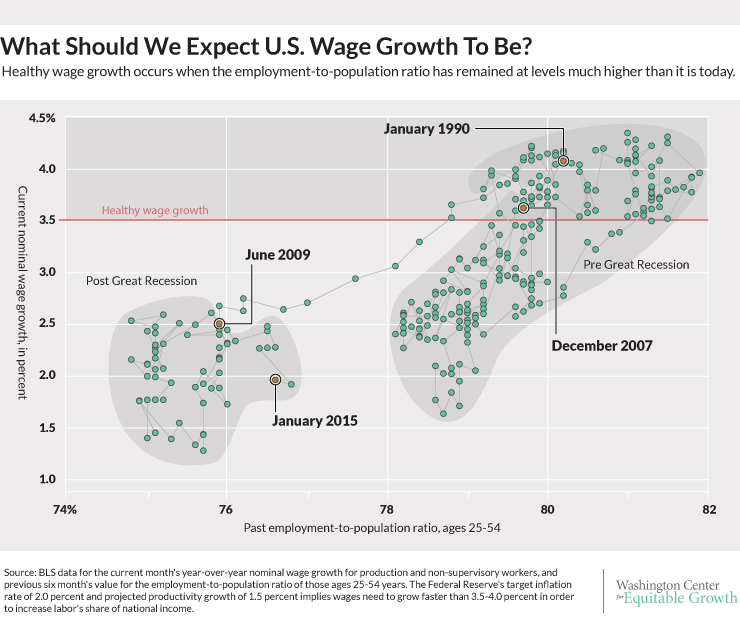U.S. wage growth remains sluggish despite employment gains
The most recent wage figures in the United States show that raises were exceedingly hard to come by for most workers even as employment rose in January by 257,000. Nominal hourly wages (before factoring in inflation) over the past year grew by 2.2 percent, according to today’s employment and earnings data from the U.S. Bureau of Labor Statistics.
These paltry gains are significantly below the wage-growth levels that economists expect to see in a healthy labor market. For wage gains that reduce income inequality and strengthen family income, nominal wage growth would need to exceed 3.5 to 4.0 percent, assuming a productivity growth rate of 1.5 percent and the Federal Reserve’s target inflation rate of 2.0 percent. Wage growth may begin to pick up as the economy continues to add jobs, but it is outside of recent historical experience for the labor market to exhibit healthy wage growth without substantially higher levels of employment.
Stronger wage growth for production and nonsupervisory employees, who make up about four-fifths of the private sector, follows higher levels of employment. In the past 25 years, nominal wage growth for these workers exceeded 4.0 percent only when the employed share of prime-age workers between the ages of 25 and 54 was at least 80 percent. Only when the prime-age employment-to-population ratio exceeded 79 percent has nominal wage growth been faster than 3.5 percent. (See Figure 1)
Figure 1

The unemployment rate, at 5.7 percent in January, rose slightly from December’s 5.6 percent, but it is helpful to focus on the employed share of the overall population because the unemployment rate does not account for workers who have left the labor force. Last month, the prime-age employment-to-population ratio was only 77.2, up from 77.0 last month, indicating the U.S. labor market is not sufficiently tight enough to produce consistent and meaningful real wage gains in the near future. Unfortunately at the current pace of employment growth, the prime-age employment rate will not exceed 79 to 80 percent until sometime in 2017 or 2018.
If the Federal Reserve raises interest rates this year, as it has suggested, it will slow employment growth and limit the possibilities for wage gains especially for workers at the bottom of the income ladder. Even when workers begin to receive significant pay raises, it will take several years of high wage growth to make up for the ground lost in the Great Recession.
